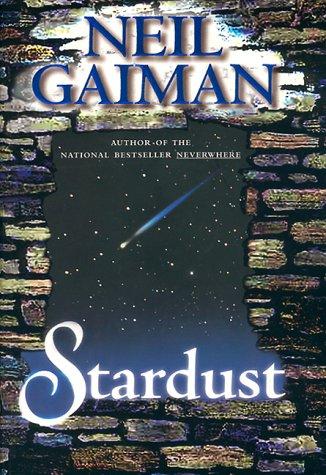Ben Bird Person says, “Here’s my cat Joy on Olga Ravn’s The Employees (2020).” Thanks for sharing Joy with us!


Photos of your felines (or whatever you’ve got!) resting on genre works are welcome. Send to mikeglyer (at) cs (dot) com

Ben Bird Person says, “Here’s my cat Joy on Olga Ravn’s The Employees (2020).” Thanks for sharing Joy with us!


Photos of your felines (or whatever you’ve got!) resting on genre works are welcome. Send to mikeglyer (at) cs (dot) com
(1) A LITTLE SMACK. Deadline takes notes as “Neil Gaiman Slaps Back At Elon Musk For Criticizing ‘LOTR: The Rings Of Power’”.
…Gaiman’s comment came after Musk slammed Amazon’s LOTR: The Rings Of Power, saying “Tolkien is turning over his grave,” as Musk is attempting to exit his proposed $44BN takeover of Twitter and amid an ongoing feud with Amazon founder and executive chairman Jeff Bezos.
(2) DANISH AUTHOR IN NY. The Community Bookstore in Brooklyn, NY will host “Olga Ravn presents ‘The Employees’” on Friday, September 30 at 6:00 p.m. Eastern. Tickets for sale at the link.

Shortlisted for the International Booker prize, and the Ursula K. Le Guin Prize, The Employees reshuffles a sci-fi voyage into a riotously original existential nightmare.
Olga Ravn’s prose is chilling, crackling, exhilarating, and foreboding. The Employees probes into what makes us human, while delivering a hilariously stinging critique of life governed by the logic of productivity.
(3) FREE READ. Sunday Morning Transport offers a free story: “About what you keep, what you mend, and what you throw away,” by Elizabeth Bear: “The Part You Throw Away”.
(4) SOURCES OF TERROR. Meg Elison promotes her new novel Number One Fan on CrimeReads.“Why Are Stories of Captivity and Abduction So Extraordinarily Terrifying?”
…Part of the reason for the power of captivity is something called the “castle doctrine.” This is an underpinning of law, dating back to the English document known as the Magna Carta. This concept and subsequent iterations of law made the home a sacrosanct place, providing the bedrock from which we derive our rights to deny search and seizure without a warrant, to remove anyone we wish from our homes, and to defend ourselves at home using force, including deadly force. This concept and the laws formed around it make any domicile, even a van or a bus a person might live in, a legally protected place that no one may enter or inspect without cause and (usually) a judicial order. As much as this is a crucial piece of our right to privacy (but not in your own womb! ha!) it also shrouds and protects perpetrators of home-based violence: domestic and child abuse, incest, and this kind of home-grown captivity….
(5) BRITISH ACADEMY BOOK PRIZE. The shortlist for the British Academy Book Prize for Global Cultural Understanding 2022 is comprised of six books. The international book prize, worth £25,000, rewards and celebrates the best works of non-fiction that have contributed to public understanding of world cultures and their interaction.
(6) WORLDCON CHAIRS PHOTO SESSION. Recorded at Chicon 8.
(7) PETER STRAUB (1943-2022). Author Peter Straub died September 4 at the age of 79. The New York Times obituary is here. The Guardian notes that Straub’s many novels ranged from his debut horror novel Julia in 1975 – later filmed as The Haunting of Julia – to the 2010 novel A Dark Matter and The Talisman, which he co-wrote with Stephen King.
He told Salon in 2016, “I like the worst characters, I like the villain. You can almost always tell there’s a lot of imaginative sympathy for them on my part. Once I start thinking about how they got that way I feel empathy and compassion. I don’t want to kill them off.”
Straub won four World Fantasy Awards and ten Bram Stoker Awards. He received World Fantasy and Bram Stoker Life Achievement awards, was named an International Horror Guilds Living Legend, and a World Horror Grandmaster.


(8) MEMORY LANE.
1999 – [By Cat Eldridge.] Speaking of most stellar novels, there’s the matter of Neil Gaiman’s Stardust. There are two novels that I think Gaiman did really well, this and Neverwhere. This is his best novel and I’ll say why now. (Me? Opinionated? Why yes!)
SPOILERS ABOUND LIKE SPRITES IN THE MOONLIGHT
Stardust was written twenty-three years ago, starting off with the story set in late April 1839, as John William Draper had just photographed the Moon and Charles Dickens was serializing Oliver Twist, but almost all of the book takes place seventeen years later, starting around October 1856.
The novel set in the village of Wall. Once every nine years an opening to Fairy occurs on All Hallows’ Eve. Naturally a young man will fall in love with what he thinks is a young woman. Who isn’t. Really she isn’t. Trust me on this plot point.
We have really evil witch-queens, near immortal rulers of vast castles delightfully named Stormhold, quests to the end of the world or nearly so. All deliciously told by Gaiman as though it was a fairy tale. There’s even unicorns. And pirates!
Yes, and true love won out in the end as it should.
END OF SPOILERS. NO MORE SPOILERS FOR NOW. MAYBE.
The best edition of this book is the one illustrated by Charles Vess that should’ve won a Hugo but didn’t. Nor did Stardust itself. The film did win one most deservingly at Denvention 3. Oh and Neil himself narrates the audio version!
I’ve read both the unadorned text version and the version with Vess artwork, or listened to it, at least a half dozen times now, and it always delights me every time that I do. No, I’ve not seen the film, nor will I ever see it following my long standing policy of never seeing any video version of books that I really, really like.

(9) TODAY’S BIRTHDAYS.
[Compiled by Cat Eldridge.]
(10) COMICS SECTION.
(11) THE WINNER GETS A T-SHIRT. Joe Stech will begin giving the Compelling Science Fiction Appreciation Award every month. See what it takes to win.
Ever since Compelling Science Fiction stopped publishing short stories I’ve been looking for ways to engage with the science fiction community that don’t involve me reading a submission queue of 500 stories/month. I’m still thinking about different approaches, but in the meantime I’m announcing a fun project: every month I’m going to send a t-shirt to the author that writes the short story that scores the highest on the set of axes that best represent Compelling Science Fiction (plausibility/novelty/entertainment).
(12) COMPELLING SCIENCE FICTION T-SHIRT DESIGN POLL. Joe Stech is also going to print up some more of the original Compelling Science Fiction shirts, but also wants to create a new design.
Below are eight different astronaut designs that I think reflect Compelling Science Fiction’s lack of taking itself too seriously, and I’d love it if you’d tell me your favorite. Please ask your friends too, if your friends have good taste! Here’s the poll.
(13) A TRUCE WITH BEAVERS. [Item by Daniel Dern.] My favorite informative fact from the article: “They’re wild, swimming rodents the size of basset hounds.” “It Was War. Then, a Rancher’s Truce With Some Pesky Beavers Paid Off.”
Horace Smith blew up a lot of beaver dams in his life.
A rancher here in northeastern Nevada, he waged war against the animals, frequently with dynamite. Not from meanness or cruelty; it was a struggle over water. Mr. Smith blamed beavers for flooding some parts of his property, Cottonwood Ranch, and drying out others.
But his son Agee, who eventually took over the ranch, is making peace. And he says welcoming beavers to work on the land is one of the best things he’s done.
“They’re very controversial still,” said Mr. Smith, whose father died in 2014. “But it’s getting better. People are starting to wake up.”
As global warming intensifies droughts, floods and wildfires, Mr. Smith has become one of a growing number of ranchers, scientists and other “beaver believers” who see the creatures not only as helpers, but as furry weapons of climate resilience.
Last year, when Nevada suffered one of the worst droughts on record, beaver pools kept his cattle with enough water. When rains came strangely hard and fast, the vast network of dams slowed a torrent of water raging down the mountain, protecting his hay crop. And with the beavers’ help, creeks have widened into wetlands that run through the sagebrush desert, cleaning water, birthing new meadows and creating a buffer against wildfires.
…“We need to get beavers back to work,” Wade Crowfoot, California’s secretary of natural resources, said in a webinar this year. “Full employment for beavers.” (Beaver believers like to note that the animals work for free.)…
(4) VERY CAREFULLY. “Once they had breathed our air, germs which no longer affect us began to kill them. The end came swiftly. All over the world, their machines began to stop and fall.” You know where that line comes from. And we don’t want to be on the receiving end. “To Prevent a Martian Plague, NASA Needs to Build a Very Special Lab” reports the New York Times.
…“It is possible that on Mars there are pathogens,” [Carl Sagan] wrote, “organisms which, if transported to the terrestrial environment, might do enormous biological damage — a Martian plague.”
Michael Crichton imagined a related scenario in his novel “The Andromeda Strain.”
Such situations, in which extraterrestrial samples contain dangerous tagalong organisms, are examples of backward contamination, or the risk of material from other worlds harming Earth’s biosphere.
“The likelihood that such pathogens exist is probably small,” Sagan wrote, “but we cannot take even a small risk with a billion lives.”
Scientists have long considered Sagan’s warnings in mostly hypothetical terms. But over the approaching decade, they will start to act concretely on backward contamination risks. NASA and the European Space Agency are gearing up for a shared mission called Mars Sample Return. A rover on the red planet is currently scooping up material that will be collected by other spacecraft and eventually returned to Earth.
No one can say for sure that such material will not contain tiny Martians. If it does, no one can yet say for sure they are not harmful to Earthlings.
With such concerns in mind, NASA must act as if samples from Mars could spawn the next pandemic. “Because it is not a zero-percent chance, we are doing our due diligence to make sure that there’s no possibility of contamination,” said Andrea Harrington, the Mars sample curator for NASA. Thus, the agency plans to handle the returned samples similarly to how the Centers for Disease Control and Prevention handles ebola: carefully….
(15) WHAT’S BREWING? Make explains how “This Elven Architecture Diorama Makes A Perfect Cup Of Tea”. It’s a sort of steampunk encounter with Rivendell.
…There are multiple options available, for different blends of tea and temperatures for steeping. With a quick press of a button, this elven village hops to life measuring out tea leaves, depositing them into the tea ball, heating water and dispensing it into the cup, then dunking the tea ball for the prescribed amount of time, then depositing it on a tiny coaster for disposal.
At the end of the process, Samuel is left with a perfect cup of tea, and a view that is absolutely wonderful.
[Thanks to Chris Barkley, Michael Toman, Cat Eldridge, Daniel Dern, Kevin Standlee, Mike Kennedy, Martin Morse Wooster, JJ, John King Tarpinian, and Andrew Porter for some of these stories. Title credit belongs to File 770 contributing editor of the day Daniel Dern.]